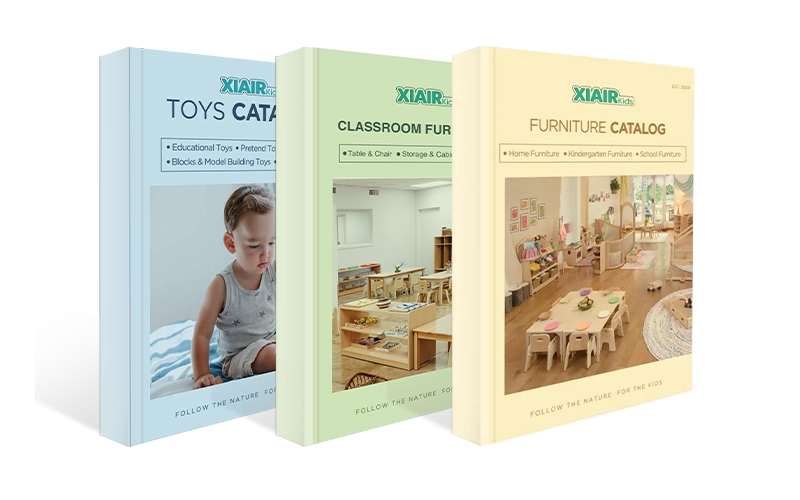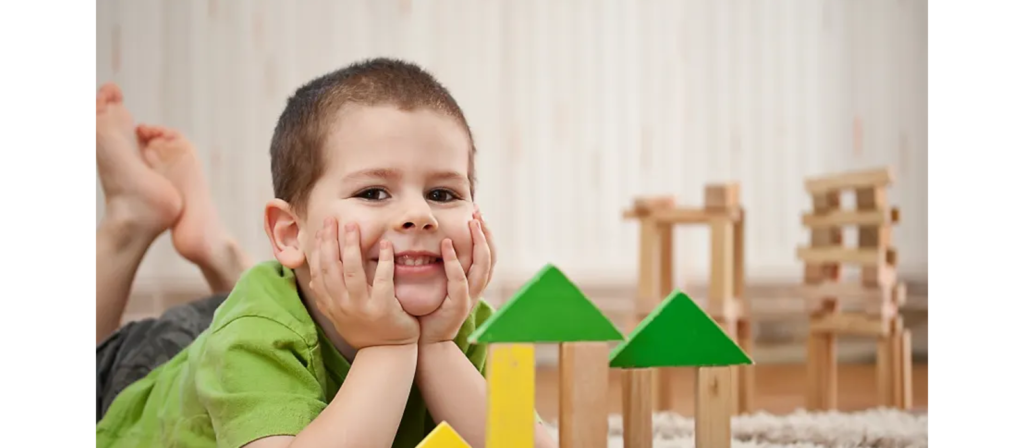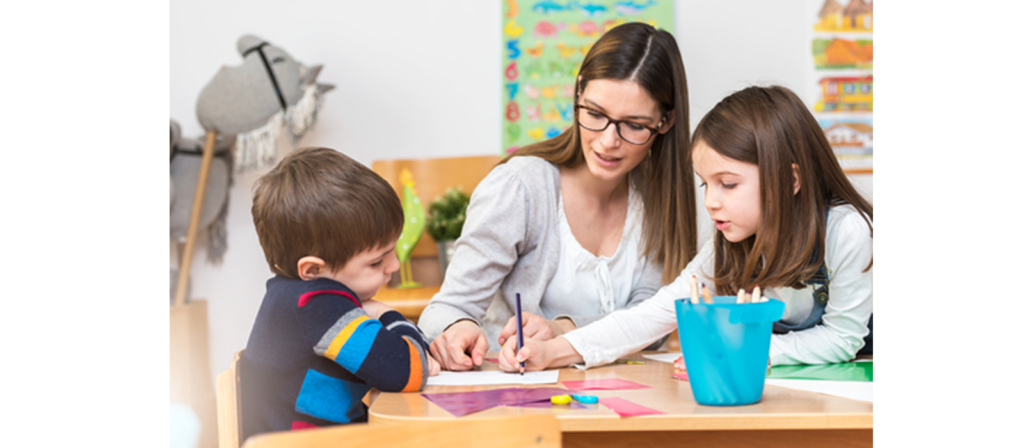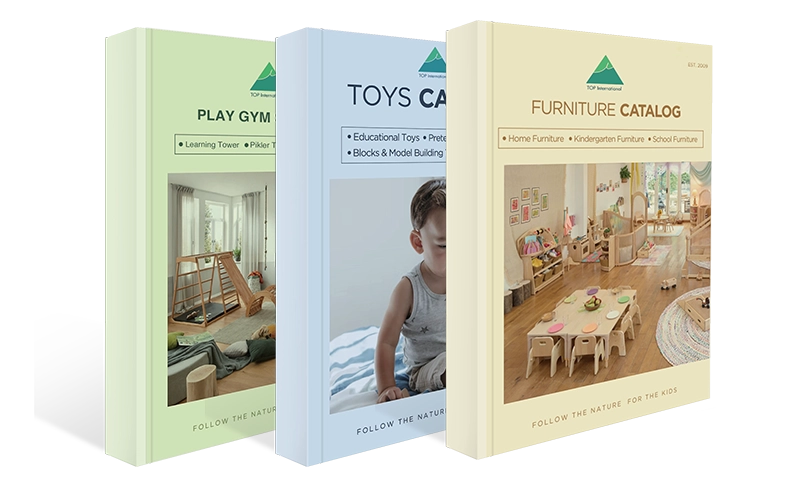Do you ever wonder if your child’s development is on track? It’s not always easy to tell. Many parents and educators face confusion when it comes to understanding the various areas of development that children go through. Physical, cognitive, social-emotional—how do all these pieces fit together?
Understanding the developmental domains is essential because it helps educators and parents recognize where a child may need support, leading to better-targeted interventions. It allows for a more holistic approach to child development, fostering growth in all areas—physical, cognitive, language, social-emotional, and adaptive. By addressing each domain, children are better equipped to thrive in school and life, as it supports not just academic skills, but also emotional regulation, social interactions, and independence.
By understanding the five core developmental domains—physical, cognitive, language, social-emotional, and adaptive—you can better identify where a child may need extra support and take steps to address it. This guide will help you navigate these domains, providing insights into what to look for and how to support each area for a balanced, thriving child.
What Are Developmental Domains?
In early childhood education, developmental domains refer to five key areas of growth and learning essential for understanding a child’s overall development. Child development and education experts recognize these areas, such as the Centers for Disease Control and Prevention (CDC) and the National Association for the Education of Young Children (NAEYC).
The five main developmental domains are:
- Desarrollo físico – the development of motor skills, both large (gross motor) and small (fine motor)
- Desarrollo cognitivo – thinking, learning, and problem-solving skills
- Desarrollo del lenguaje – communication, including speaking, listening, and understanding
- Desarrollo socioemocional – self-awareness, emotional regulation, and interactions with others
- Adaptive Development – the ability to perform daily self-help tasks independently
These categories are not just arbitrary divisions but are based on years of research into how children grow and learn. Prominent theories, such as Piaget’s stages of cognitive development and Erikson’s psychosocial stages, suggest that these areas of development are interconnected, meaning progress in one domain often supports growth in another.
Understanding the developmental domains can help teachers and school directors support each child’s learning journey more effectively. Instead of focusing on one isolated area, this framework helps nurture all aspects of a child’s growth.

Why Developmental Domains Matter?
Holistic Assessment of Child Development
One of the main reasons developmental domains matter is that they allow teachers to assess a child’s growth holistically. Instead of focusing on isolated skills, teachers can examine how a child progresses across various physical, cognitive, and social-emotional development areas. This comprehensive approach gives a clearer picture of the child’s readiness for learning and life.
Early Identification of Developmental Delays
Another key reason understanding developmental domains is crucial is that they help identify early signs of developmental delays or concerns. For example, if a child lags in language development, it could indicate potential struggles in social-emotional skills or cognitive abilities. Teachers can spot potential issues early by observing progress across multiple domains, allowing for timely interventions.
Tailoring Education to Each Child’s Needs
Teachers can use developmental domains as a guide to tailor their teaching methods to suit each child’s needs. If a child excels in one domain but struggles in another, educators can create a more personalized learning experience. This approach ensures that no child is left behind and that each development area is nurtured equally.
Balanced Focus on All Areas of Development
Using developmental domains allows teachers to maintain a balanced focus on all areas of a child’s development, ensuring that no one domain is overlooked. Focusing solely on cognitive or academic skills can lead to neglecting a child’s emotional or social growth, which are just as crucial for future success. Developmental domains help create an environment where all aspects of a child’s development are prioritized.
Empowering Teachers with a Flexible Approach
Lastly, understanding the interconnectedness of developmental domains empowers teachers to take a more flexible and responsive approach to teaching. When a teacher notices a child struggling in one area, they can adapt their methods to support multiple domains simultaneously. For example, play-based learning can boost language and social-emotional skills, helping the child grow in both areas.
By incorporating the developmental domains into their practice, teachers support well-rounded development and provide more targeted, effective interventions that address each child’s unique needs.

Receive a free catalog and custom layout to help you design your ideal classroom easily.
The Physical Development Domain
The physical development domain involves the growth of the body and habilidades motoras, especially during the first three years of life. These skills affect how children interact with others, objects, and their environment. In this section, we will define the key stages of physical development in infants and toddlers and explore how physical growth influences immediate and long-term outcomes for children and adults.
Key Aspects of the Physical Development Domain
The physical development domain can be broken down into two main categories:
- Gross Motor Development: Involves large movements that require coordination and strength, such as crawling, walking, running, jumping, and climbing. These skills allow children to explore their surroundings and engage in physical play, essential for building confidence and strength.
- Fine Motor Development: This refers to smaller, more delicate movements that involve the use of hands and fingers, like holding a pencil, using scissors, or stacking blocks. Fine motor skills are crucial for tasks such as writing, dressing, and feeding themselves, and they contribute to cognitive development.
| Aspecto | Gross Motor Development | Fine Motor Development |
| Skills Involved | Walking, running, jumping, climbing, balancing | Writing, drawing, cutting, buttoning, grasping small objects |
| Grupos musculares | Large muscles of the arms, legs, and torso | Small muscles of the hands and fingers |
| Developmental Impact | Builds physical strength, balance, and coordination; promotes independence and confidence | Enhances dexterity, fine motor control, and ability to perform daily tasks |
| Ejemplos | Crawling, walking, running, jumping, playing sports | Writing, drawing, cutting, buttoning, and grasping small objects |
Physical development forms the foundation for many other skills, as physical abilities are often linked to cognitive and social-emotional growth. For instance, children who can move freely and confidently tend to participate more actively in social situations, fostering emotional and social skills.
Physical Development at Different Ages
Children’s physical development progresses in stages, with distinct milestones reached at each age. Let’s take a closer look at how the physical development domain unfolds at different stages of early childhood:
Infants (Birth to 12 months)
Babies make significant strides in physical development in the first year of life. Key milestones include:
- Head control: Newborns develop the ability to lift their heads while lying on their stomachs.
- Rolling over and sitting: Around 4-6 months, babies begin rolling over and can sit up with support.
- Crawling and standing: By 9-12 months, babies start to crawl and may begin pulling themselves up to stand.

These early physical milestones are essential because they allow infants to explore their environment and gain independence, laying the foundation for later cognitive and social development.
Toddlers (1 to 3 years)
As toddlers grow, their physical development becomes more refined. At this stage, children develop:
- Caminando: Most toddlers take their first steps around 12 months, gradually gaining balance and coordination.
- Running and jumping: By 2-3 years, toddlers can run, jump, and climb with increasing confidence.
- Habilidades motoras finas: They begin to refine fine motor skills, such as drawing simple shapes or stacking blocks.

This stage is critical for developing coordination and strength, which enables children to participate in more complex physical activities. Toddlers also begin to engage in more interactive play, helping to foster social and emotional growth.
Preschoolers (3 to 5 years)
Preschoolers experience rapid growth in both gross and fine motor skills. Key developments include:
- Improved balance and coordination: Children can hop, skip, and ride a tricycle with more control.
- Advanced fine motor skills: They can hold a pencil correctly, cut with scissors, and complete more intricate tasks like buttoning clothes or tying shoes.
- Increased independence: At this stage, children are more independent in self-care tasks, such as feeding themselves or dressing.

The physical skills acquired during preschool are crucial for preparing children for school. Strong physical abilities allow children to better engage in classroom activities and interact with peers.
Providing Developmentally Appropriate Activities
Teachers and caregivers must provide activities that align with each child’s developmental stage to support growth in the physical development domain. Developmentally appropriate activities are key to helping children refine their motor skills, build coordination, and gain independence in daily tasks. When activities are tailored to a child’s abilities, they are more likely to succeed, gain confidence, and experience a sense of accomplishment, encouraging continued development.
By offering these age-appropriate activities, teachers and caregivers ensure that children’s developmental domains are supported in a balanced way. This approach promotes physical development and enhances cognitive and social-emotional growth. As children master each stage, they gradually take on more complex physical tasks, fostering a positive learning and development cycle.
This method ensures that all children, regardless of their developmental pace, can participate in meaningful activities that support their growth across multiple domains.
The Cognitive Development Domain
Cognitive development is a critical aspect of the developmental domains that influences a child’s ability to think, reason, and process information. This domain involves skills such as memory, problem-solving, attention, and abstract thinking. Cognitive development progresses through distinct stages, and educators and families play a vital role in supporting children’s growth at each stage.
Key Cognitive Development Goals for Children
In the cognitive development domain, children develop key skills that form the foundation for learning and everyday functioning. Some of the essential cognitive development goals include:
- Causal Relationships: Understanding cause-and-effect relationships helps children grasp how actions lead to consequences.
- Spatial Relationships: Children begin to understand how objects relate to each other in space, enhancing their ability to navigate and interact with the environment.
- Resolución de problemas: As children grow, they develop the ability to identify problems and think of solutions, a crucial skill for cognitive development.
- Imitation: Children learn by observing and imitating others, a key method through which they acquire new skills and behaviors.
- Memory: Developing memory skills allows children to retain and recall information, supporting their learning and cognitive growth.
- Number Sense: As they grow, children begin to understand basic number concepts, laying the foundation for later mathematical learning.
- Clasificación: Children start grouping objects based on shared characteristics, helping them develop logical thinking and categorization skills.
- Symbolic Play: Through imaginative play, children begin to use objects and actions to represent something else, which supports abstract thinking and creativity.
- Attention Maintenance: Children learn to focus and sustain attention on tasks, an important aspect of cognitive control.
- Understanding Personal Care Routines: As they develop, children begin to understand and follow personal care routines, such as washing hands and brushing teeth, which are linked to both cognitive and adaptive development.
These goals highlight the essential cognitive milestones children reach as they grow, and teachers and families can support each of these through age-appropriate activities and interactions.
Etapa sensoriomotora (desde el nacimiento hasta los 2 años)
During the sensorimotor stage, from birth to 2 years, infants explore their world primarily through their senses and physical actions. At this stage, children develop fundamental cognitive skills, including understanding object permanence—realizing that objects continue to exist even when out of sight. This stage lays the groundwork for later cognitive abilities and is the foundation of the cognitive developmental domain.

Etapa preoperacional (2 a 7 años)
The preoperational stage occurs between 2 and 7 years of age. During this time, children begin using symbols to represent objects and experiences. However, their thinking is still egocentric and not yet logical. They struggle to understand conservation concepts and often cannot consider multiple perspectives. The preoperational stage plays a significant role in the developmental domains, marking the beginning of complex thinking and language development.

Etapa de operaciones concretas (7 a 11 años)
Children begin to develop logical thinking skills in the concrete operational stage (7 to 11 years). They understand the concept of conservation and can perform operations mentally, such as addition and subtraction. However, their thinking is still tied to concrete objects and experiences. This stage marks a significant advancement in the developmental domains, as children begin to apply logic to solve problems and understand cause and effect.

Formal Operational Stage (12 Years and Older)
The formal operational stage, which begins at around 12 years of age, marks the emergence of abstract thinking. Adolescents can now think hypothetically, reason about future possibilities, and engage in more complex problem-solving. This stage is essential in the developmental domain as it allows adolescents to reason about abstract concepts and engage in higher-order thinking, vital for academic learning and adult life.

How Teachers and Families Can Help Children Progress in the Cognitive Development Domain
Supporting children’s cognitive development within the developmental domains is a crucial responsibility for teachers and families. Here are some ways to help children progress in the cognitive domain:
Encourage Exploration and Hands-On Learning
Children learn best through exploration and play, which promotes cognitive growth in the developmental domains. Teachers and families can encourage this by allowing children to interact with objects and explore their surroundings.

Foster Language Development
Language and cognitive development are closely linked in the developmental domains. Encouraging children to use language to express thoughts and ask questions enhances their cognitive skills. Conversations, open-ended questions, and reading together support growth in the cognitive development domain.
Offer Opportunities for Problem-Solving
Providing age-appropriate challenges helps children develop problem-solving skills within the cognitive development domain. Activities like puzzles and sorting objects improve reasoning and logical thinking.
Promote Abstract Thinking
As children enter the formal operational stage, they begin to think abstractly. Teachers can support this by encouraging discussions and activities that require critical thinking, promoting growth in the cognitive development domain.

Create a Stimulating Learning Environment
A learning environment rich in books, puzzles, and educational games supports cognitive growth in the developmental domains. These resources challenge children’s cognitive skills and keep them engaged in learning.
Use Scaffolding to Support Cognitive Growth
Scaffolding helps children accomplish tasks beyond their current abilities. This method promotes cognitive growth within the developmental domains by gradually reducing support as the child gains confidence and independence.
By using these strategies, teachers and families can significantly support children’s progress in the cognitive developmental domains. This helps them develop essential thinking skills and prepares them for future academic challenges and lifelong learning.
The Language Development Domain
The language development domain focuses on how children acquire language, essential for communication, social interaction, and cognitive development. Language skills include listening, speaking, understanding, and later, reading and writing. This domain is about acquiring vocabulary and using language in different contexts to express ideas, ask questions, and build relationships.
Early Language Acquisition
Language acquisition begins early in life, and the foundations are laid even in infancy. Infants start by recognizing sounds, responding to familiar voices, and later, babbling. As they grow, they begin to form words and simple phrases. The development of language skills is one of the most critical developmental domains, as it affects nearly every area of a child’s life, including academic success, social interactions, and emotional expression.

The Role of Interaction in Language Development
Language development is heavily influenced by the child’s interactions with caregivers, teachers, and peers. Children learn language structure through these interactions, including vocabulary, grammar, and pronunciation. These interactions also teach children how to use language in a social context, such as how to ask for help, share information, or express needs and feelings.
Milestones in Language Development
Language development follows a predictable pattern, with specific milestones reached at various ages. These milestones help to assess whether a child is progressing as expected in the language development domain. For instance:
- Infants (0-12 months) start by cooing and babbling.
- Toddlers (1-3 years) begin to use two- and three-word phrases and expand their vocabulary.
- Preschoolers (3-5 years) use more complex sentences and can converse with others.
- School-age children (5+ years) can express abstract ideas and understand more complex language structures.
These milestones help us understand how children progress in the developmental domains and provide a basis for early intervention if needed.
How Teachers and Families Can Help Children Progress in the Language Development Domain
Both teachers and families play an essential role in supporting children’s language development. Here are several effective strategies to foster progress in the language development domain:
Engage in Conversations
Engage children in daily conversations and ask open-ended questions. This helps expand their vocabulary and understanding of language. For example, instead of asking “Did you have fun today?” try “What did you enjoy most about your day?”
Read Aloud Regularly
Reading aloud is a powerful way to support language growth. Teachers and families can read books together to expose children to new words and ideas. Ask questions like, “Why do you think the character did that?” to help children develop comprehension and vocabulary.
Encourage Pretend Play
Pretend play helps children practice language in different contexts. Teachers can set up role-play areas, and families can encourage children to create stories and scenarios at home. This enhances creativity and social communication skills.
Expand and Model Language
Expand on what children say and model correct language. For example, if a child says, “I went to the park,” an adult might respond, “You went to the park, that sounds fun!” This helps reinforce grammar, vocabulary, and communication skills.
Create a Language-Rich Environment
Create environments filled with books, labels, and interactive language activities. Parents can integrate language into daily routines, like describing actions while cooking. Singing songs or playing rhyming games also helps reinforce language patterns.
Support Multilingualism (if applicable)
For children learning multiple languages, encourage the use of all languages in meaningful contexts. This promotes cognitive benefits and enhances problem-solving skills. Avoid pressuring children to focus on just one language.
By using these strategies, both teachers and families can significantly help children progress in the language development domain. These efforts enhance children’s ability to communicate effectively and set the foundation for lifelong learning and social success.

The Social-Emotional Development Domain
The social-emotional development domain focuses on a child’s ability to understand and manage their emotions, develop positive relationships with others, and exhibit appropriate social behaviors. This domain plays a crucial role in overall development, as it directly influences a child’s ability to form friendships, cooperate with peers, and navigate complex social environments.
Social-emotional development also includes the ability to recognize and regulate emotions, develop empathy, and build self-esteem. These skills are essential not only for academic success but also for well-being throughout life.
Emotional Regulation and Self-Awareness
At the core of the social-emotional development domain is emotional regulation—the ability to manage one’s emotions in a healthy way. In early childhood, children are learning how to identify their emotions (e.g., happiness, anger, sadness) and begin to control their reactions. They gradually develop the ability to calm themselves down when upset, express their feelings appropriately, and understand how their emotions affect their behavior and interactions with others.
Self-awareness also begins to develop in early childhood, as children begin to recognize themselves in a mirror or understand that others have different thoughts and feelings. These early experiences of emotional regulation and self-awareness lay the foundation for more advanced social-emotional skills as children grow.
Building Relationships and Social Skills
Another essential component of social-emotional development is the ability to form positive relationships with others. From an early age, children begin to interact with family members, peers, and caregivers, which helps them learn how to share, take turns, and collaborate. As children grow, they develop deeper social skills, such as resolving conflicts, expressing their needs in a respectful way, and understanding the perspectives of others.
During the early years, teachers and families play a critical role in guiding children through these interactions and helping them learn how to navigate the social world around them.
Empathy and Understanding Others
Empathy, the ability to understand and share the feelings of others, is another crucial skill in the social-emotional development domain. Children start to show signs of empathy in toddlerhood, recognizing when someone is upset and offering comfort. As they age, children’s ability to empathize with others deepens, which helps them build strong, supportive relationships and become sensitive to the emotions of those around them.
Self-Esteem and Confidence
Self-esteem, or how children feel about themselves, is a key component of social-emotional development. Positive self-esteem helps children feel confident in their abilities and fosters a sense of self-worth. Teachers and families can help build children’s self-esteem by praising their efforts, encouraging them to take on challenges, and providing opportunities for them to succeed.
Confidence also plays a significant role in social interactions. Children with higher self-esteem are more likely to engage in social activities, assert their needs, and express themselves in a positive way.

How Teachers and Families Can Help Children Progress in the Social-Emotional Development Domain
Teachers and families are integral in helping children develop strong social-emotional skills. Here are several ways they can support children’s progress in the social-emotional development domain:
Model Healthy Emotional Expression
One of the most important ways to support social-emotional development is by modeling healthy emotional expression. Teachers and caregivers should demonstrate how to express emotions in a calm and appropriate manner. For example, when feeling frustrated, an adult might say, “I’m feeling frustrated because this is tricky, but I’m going to take a deep breath and try again.” This shows children that it’s normal to have negative emotions, but it’s important to regulate and express them in constructive ways.
Create a Safe and Supportive Environment
A safe and supportive environment is essential for children’s emotional well-being. In both the home and classroom settings, it’s important to create an atmosphere where children feel comfortable expressing their feelings and asking for help. Teachers and families should provide emotional support and validation, making sure children know that their emotions are heard and respected.
This environment also includes providing clear expectations for behavior, offering praise and encouragement, and helping children understand the consequences of their actions in a supportive way. Consistency and routine also help children feel secure and develop trust.
Teach Conflict Resolution Skills
Conflict resolution is a key skill in the social-emotional development domain. Teachers and caregivers can support children by teaching them how to manage disagreements, solve problems, and navigate social challenges. For example, when a child has a conflict with a peer, an adult can guide them by saying, “Let’s talk about how both of you feel and see if we can come up with a solution together.”
By providing tools for resolving conflicts peacefully, adults help children develop self-control, empathy, and cooperative behaviors.
Encourage Positive Social Interactions
Encouraging positive social interactions is essential for social-emotional growth. Teachers can create opportunities for children to interact with their peers in group activities, cooperative games, and classroom discussions. These activities help children practice essential social skills, such as sharing, taking turns, and listening to others.
At home, families can support social development by arranging playdates, participating in community activities, and encouraging children to engage in group games that promote cooperation.
Promote Empathy and Understanding
Teaching children empathy is one of the most critical components of the social-emotional development domain. Families and teachers can encourage empathy by discussing emotions, reading stories about feelings, and encouraging children to consider how others might feel in different situations. For example, after a conflict, caregivers can ask children, “How do you think your friend felt when that happened?” This helps children understand others’ emotions and learn to respond with kindness and understanding.
Foster Independence and Responsibility
Teaching children to take responsibility for their actions and encouraging independence is vital for building self-esteem and confidence. Teachers and families can support this by giving children age-appropriate tasks and allowing them to make choices. This could include simple tasks such as choosing their clothes, deciding which activity to do, or helping set the table. These small steps help children feel capable and empowered.
By using these strategies, teachers and families can help children develop the essential social-emotional skills they need to succeed in school and life. These skills support healthy relationships and lay the foundation for emotional well-being and positive social interactions throughout childhood and beyond.
The Adaptive Development Domain

The adaptive development domain refers to the growth of a child’s ability to perform everyday tasks independently. This domain involves the development of self-help skills, such as dressing, feeding, grooming, and toileting, as well as more complex life skills that help children navigate their environment and care for themselves. Adaptive skills also include social behaviors, problem-solving abilities, and decision-making, which are essential for independence and overall functioning.
As children grow, they move from needing full assistance with everyday tasks to performing these tasks independently. The adaptive development domain is closely connected to other developmental areas, such as social-emotional and cognitive development, because the ability to manage one’s own needs is tied to emotional regulation, self-esteem, and cognitive skills.
Self-Help and Daily Living Skills
Self-help skills are foundational in the adaptive development domain. These are the practical skills that children need in order to care for themselves and contribute to their family and school life. Examples include:
- Dressing: Learning to dress independently, which often begins with basic tasks like putting on shoes or zipping a jacket and progresses to more complex tasks as children grow.
- Feeding: Self-feeding, using utensils, and learning to clean up after meals are essential for fostering independence and self-sufficiency.
- Toileting: Potty training is a significant milestone in the early years, as it marks a child’s growing ability to manage their own body and personal hygiene.
- Grooming: Brushing teeth, washing hands, and combing hair are important skills that children need to develop for personal care.

These tasks, while seemingly simple, are crucial in building a child’s independence and fostering confidence. As children master these skills, they gain a sense of competence and self-worth, which is essential for their overall development.
Problem-Solving and Decision-Making
As children grow, they also develop problem-solving skills and the ability to make decisions. These skills are part of the adaptive development domain because they enable children to navigate their environment and address challenges independently. Problem-solving involves figuring out how to handle difficult situations or complete a task, while decision-making includes the ability to choose between options and consider the consequences of those choices.
These abilities are not only practical in everyday life (e.g., deciding what to wear or which activity to do) but also important for social interactions and emotional growth. For example, when children are able to resolve conflicts on their own or make choices about how to manage their time, they develop greater independence and social competence.
Developing Independence and Responsibility
The ultimate goal of the adaptive development domain is to help children become independent and responsible for their actions. As children acquire adaptive skills, they begin to take on more responsibility, both at home and in the classroom. This can involve simple tasks like helping to set the table or completing a chore at home, as well as more complex responsibilities, such as managing their own schedule or making decisions about their learning.
As children develop these skills, they also gain a sense of autonomy and self-regulation, which contributes to their overall emotional and social well-being. Independence in the adaptive development domain promotes confidence, self-esteem, and a sense of competence.

How Teachers and Families Can Help Children Progress in the Adaptive Development Domain
Teachers and families play a critical role in supporting children’s growth in the adaptive development domain. Here are several strategies that can help children develop the independence and self-help skills they need:
Provide Opportunities for Self-Help Skills
One of the most important ways to support adaptive development is by providing children with opportunities to practice self-help skills. Teachers and caregivers can encourage children to dress themselves, feed themselves, and take care of their personal hygiene. For example, in the classroom, teachers can set up areas where children can practice dressing themselves or use child-sized tools to clean up after meals. At home, parents can guide children through the process of brushing their teeth or making their bed, offering encouragement as they gain confidence in their abilities.
Encourage Problem-Solving and Decision-Making
Teachers and families can foster problem-solving and decision-making skills by giving children age-appropriate challenges that require them to think critically and make decisions. This can be as simple as asking children to choose what clothes to wear based on the weather or helping them figure out how to resolve a disagreement with a friend. When children are given the chance to make decisions and solve problems on their own, they develop a sense of control and ownership over their actions.
Create an Environment that Supports Independence
Creating an environment that supports independence is crucial for encouraging adaptive development. Teachers can design classroom spaces that allow children to access materials on their own, such as shelves with easy-to-reach supplies or areas where children can store their personal belongings. At home, families can create routines that foster independence, such as giving children specific tasks to complete, like setting the table or putting away their toys.
Both environments should be structured in a way that encourages children to take initiative and perform tasks without constant adult assistance. This will help build self-confidence and competence in daily living skills.
Encourage Responsibility
Encouraging responsibility is a key aspect of the adaptive development domain. Teachers can assign classroom jobs to children, such as taking attendance, watering plants, or organizing materials. These small tasks help children feel accountable and teach them how to manage their time and duties. At home, families can assign chores or responsibilities based on the child’s age and abilities, such as feeding pets or tidying up their room.
By encouraging children to take responsibility for their actions, teachers and parents help them develop a sense of ownership and pride in their work. This, in turn, boosts their sense of competence and independence.
Provide Positive Reinforcement and Praise
Providing positive reinforcement is essential for fostering independence and confidence in the adaptive development domain. When children complete a task independently, it is important to acknowledge their efforts and celebrate their achievements. This praise reinforces the child’s belief in their ability to handle new challenges and motivates them to continue developing their adaptive skills.
Teachers and parents should focus on the effort children put into completing tasks rather than just the outcome. This helps children build a growth mindset, where they understand that learning and improvement come through practice and persistence.
By using these strategies, both teachers and families can support children in developing the adaptive skills they need to become independent, responsible, and self-sufficient. These skills are critical not only for daily living but also for a child’s overall growth across all developmental domains.
Developmental Delays
In early childhood, children develop at different rates, but some may experience delays in one or more developmental domains. A developmental delay occurs when a child does not achieve typical developmental milestones within the expected age range. These delays can affect a child’s physical, cognitive, language, social-emotional, or adaptive development, and they often require early intervention to support the child’s growth and learning.
It’s important to note that developmental delays are not always indicative of long-term issues. With appropriate support, many children can catch up and reach their developmental potential. However, early identification and intervention are crucial for helping children overcome challenges and succeed in school and life.

Signs of Developmental Delays in Different Domains
Early identification of developmental delays is essential to ensure that children receive the necessary support. Here are some common signs of developmental delays in the different developmental domains:
Physical Development Delays
- Difficulty with basic motor skills, such as crawling, walking, or grasping objects.
- Lack of coordination or frequent clumsiness when performing everyday tasks.
- Difficulty with fine motor skills, such as holding a pencil or buttoning clothes.
Cognitive Development Delays
- Difficulty understanding simple concepts or instructions.
- Limited problem-solving abilities or difficulty learning new skills.
- Delayed memory development or inability to retain new information.
Language Development Delays
- Limited vocabulary or difficulty forming sentences by the expected age.
- Difficulty understanding and following simple directions.
- Problems with articulation or unclear speech beyond the typical age range.
Social-Emotional Development Delays
- Difficulty forming relationships with peers or adults.
- Limited emotional expression or challenges with emotional regulation.
- Persistent withdrawal or excessive tantrums in social situations.
Adaptive Development Delays
- Difficulty with self-help skills, such as feeding, dressing, or using the bathroom independently.
- Inability to follow simple routines or complete age-appropriate tasks independently.
- Lack of interest or reluctance to engage in everyday activities, such as brushing teeth or cleaning up.

Causes of Developmental Delays
Developmental delays can have various causes, including genetic factors, medical conditions, environmental influences, or a combination of these. Some common causes include:
- Genetic conditions: Certain genetic disorders, such as Down syndrome or autism spectrum disorder, can cause delays in one or more developmental domains.
- Prematurity: Children born prematurely may experience delays due to their early arrival, which can impact physical, cognitive, and social-emotional development.
- Environmental factors: Factors such as poor nutrition, exposure to toxins, lack of access to healthcare, or a stressful home environment can all contribute to developmental delays.
- Hearing or vision impairments: Children with undiagnosed hearing or vision issues may struggle with language and social development, as they may miss out on critical learning experiences.
It’s important for teachers and families to be aware of these potential causes and work with healthcare professionals to address any underlying issues.
Early Intervention and Support
When a developmental delay is suspected, early intervention is key. Research has shown that children receiving timely support are more likely to progress and overcome developmental challenges. Early intervention can involve a range of services, including:

- Speech therapy: For children with language delays, speech therapy can help improve communication skills and language development.
- Occupational therapy: Children with fine motor delays can benefit from occupational therapy, which helps them develop the skills necessary for daily living activities.
- Physical therapy: For children with gross motor delays, physical therapy can help improve strength, coordination, and mobility.
- Social-emotional support: For children with social-emotional delays, counseling or behavioral therapy can help them develop better emotional regulation and social interaction skills.
Teachers and families must collaborate with specialists to create an individualized plan that addresses the child’s unique needs. Early intervention programs often involve a team of professionals who work together to develop strategies that promote growth across all developmental domains.
Role of Teachers and Families in Supporting Children with Developmental Delays
Teachers and families play a vital role in identifying and supporting children with developmental delays. Here are some ways they can help:
1. Early Identification
Teachers and families should be vigilant in observing children’s development and look for signs of delays. Regular developmental screenings and assessments can help identify areas where a child may need extra support. If delays are suspected, seeking professional advice early is essential to ensure timely intervention.
2. Provide a Supportive Learning Environment
A nurturing, structured, and supportive environment is essential for children with developmental delays. Teachers can create classrooms that cater to children’s individual needs, offering modifications and accommodations to ensure that children can participate in activities at their level. Similarly, parents can provide consistent routines and emotional support at home to help children build confidence and independence.
3. Use Individualized Approaches
Every child is different, so using individualized approaches to support development is important. Teachers and caregivers can tailor learning activities and interventions to match the child’s specific needs, focusing on strengthening areas of weakness while reinforcing their strengths.
4. Encourage Social and Emotional Growth
For children with social-emotional delays, it’s essential to encourage interactions with peers and provide opportunities for social skill development. Teachers can guide children through group activities, role-playing, and emotional expression exercises. Families can promote social interactions at home through playdates and activities that encourage positive social behaviors.
5. Foster Self-Esteem and Confidence
Children with developmental delays may struggle with feelings of frustration or inadequacy. Teachers and families can help build children’s self-esteem by praising their efforts, celebrating their achievements, and providing encouragement during challenges. Creating a positive, supportive atmosphere can help children feel valued and motivated to progress.

Preguntas frecuentes
1. What are the main developmental domains in early childhood?
The main developmental domains in early childhood are physical, cognitive, language, social-emotional, and adaptive development. These five developmental domains are crucial for overall child growth and influence how children interact with their environment, solve problems, and develop relationships.
2. What should I do if I suspect a developmental delay in a child?
If you suspect a developmental delay, it’s important to seek early intervention. Consult a pediatrician or developmental specialist to assess the child’s progress in the developmental domains. Early identification of delays can help in creating tailored support strategies that promote growth in the affected domains.
3. How can families support all areas of development at home?
Families can support all areas of development by creating a rich, stimulating environment that encourages learning in each of the developmental domains. This includes engaging in activities that promote physical activity, language use, problem-solving, emotional expression, and independence. Routine activities like reading, play, and interactive conversations help children grow across the five developmental domains.
4. Is it normal for children to develop faster in some domains than others?
Yes, it’s normal for children to develop at different rates across the developmental domains. Some children may develop physical or cognitive skills more quickly, while others may excel in language or social-emotional development. Each child progresses at their own pace, and variations are common.
5. Can development in one domain compensate for another that’s lagging?
While development in one developmental domain may support or complement growth in other areas, it cannot fully compensate for a lag in another domain. For example, improvements in cognitive skills may enhance language abilities, but they cannot replace the need for social-emotional development or physical skills. Each of the five developmental domains—physical, cognitive, language, social-emotional, and adaptive—are interconnected, and delays in one area can have cascading effects on others. Comprehensive support in each domain is crucial for balanced development and to ensure that children have the necessary skills for overall success.
6. What role does play have in supporting developmental domains?
Play is an essential tool in supporting all developmental domains. Through play, children develop physical strength, cognitive abilities, language skills, emotional regulation, and social interactions. Play-based learning is crucial for promoting development in the five developmental domains and should be encouraged both at home and in educational settings.
7. What kinds of professionals support children with developmental delays?
Children with developmental delays are typically supported by a range of professionals, including pediatricians, speech therapists, occupational therapists, and special education teachers. These specialists work together to assess the child’s progress in the developmental domains and provide tailored interventions to support growth in the affected areas.

Receive a free catalog and custom layout to help you design your ideal classroom easily.
Conclusión
In summary, understanding the five developmental domains—physical, cognitive, language, social-emotional, and adaptive—is essential for supporting children’s growth across all areas. By focusing on these domains, educators and families can create a well-rounded approach to development, helping children reach their full potential. When these domains are nurtured together, children are better equipped to succeed not only in school but also in their personal and social lives.
Creating environments that promote such development involves careful planning, especially in terms of the physical space where children learn and grow. In this context, selecting furniture that meets the specific needs of young learners becomes a crucial element. At Top Montessoris, we understand the importance of designing and providing high-quality preschool furniture that aligns with these developmental needs. Our products are thoughtfully crafted to support children’s physical and cognitive development, as well as their social and emotional growth. The right furniture can encourage exploration, provide comfort, and foster independence—all of which are vital for progress in the developmental domains.







